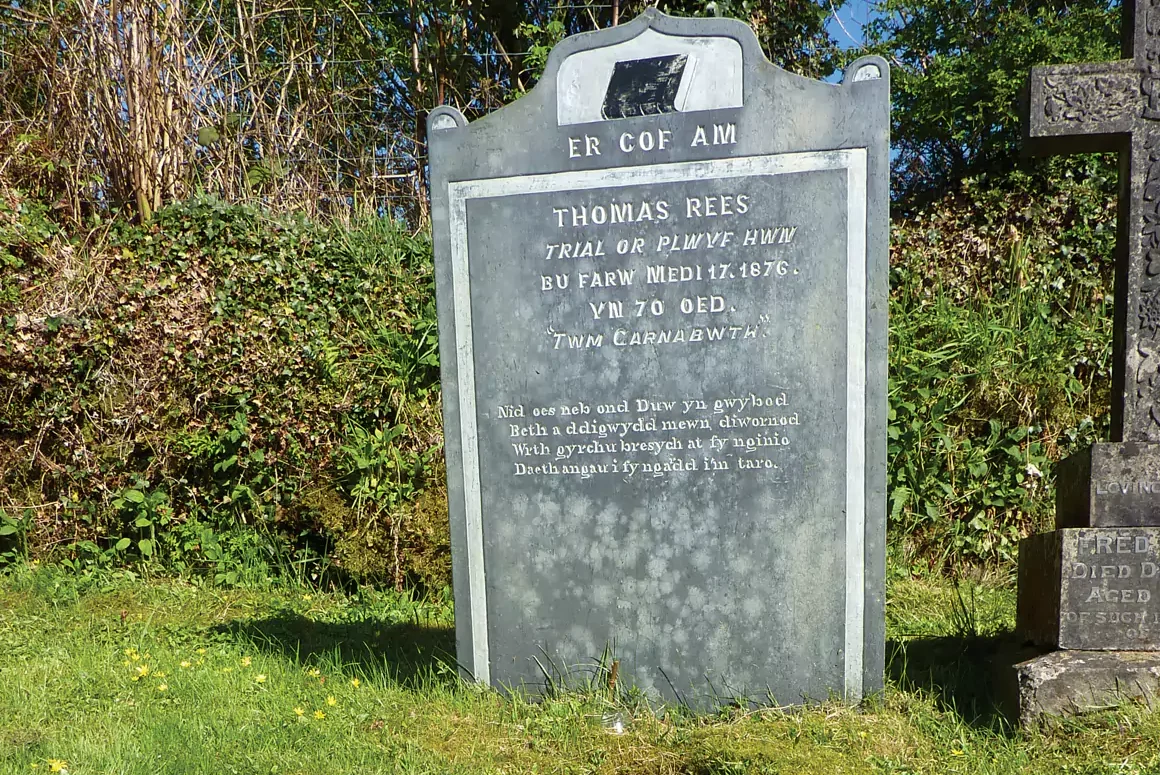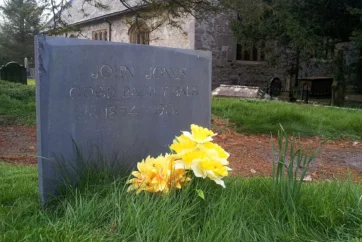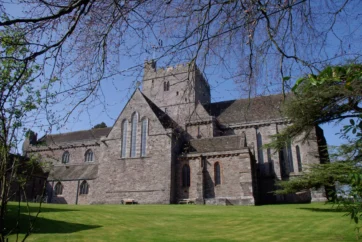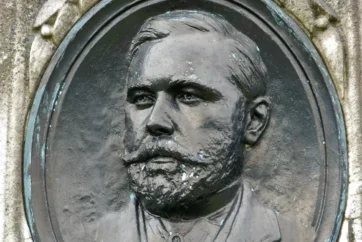![]()
Geoff Brookes tells the tale of Thomas Rees, a gardener from Mynachlog-Ddu.
There are those who believe that near Mynachlog-Ddu in the Preseli Hills, you will find the source of the bluestones used in the construction of Stonehenge. Quite a claim to fame, you might think, but it was a different kind of stone that drew me to the quiet beauty of the village on a sunny day in spring.
It is an unusual stone too, waiting for you in the cemetery at the Bethel Chapel. It is the grave of Thomas Rees and the inscription, in Welsh, reads:
No one but God knows
What may happen in a day.
While fetching a cabbage for my dinner
Death came into my garden and struck me.
It’s the sort of thing that can really mess up your day.
The Preseli hills are always worth a journey and this grave is notable, not only as a record of an unfortunate gardening incident, but as the resting place of the man at the heart of the first recorded Rebecca Riot. This was when the newly erected toll gate on what is now the A478 in Efailwen, on the edge of Carmarthenshire and Pembrokeshire, was attacked by men disguised with petticoats and bonnets on 13 May, 1839. The road was used for carting lime, essential for farmers struggling to maintain the fertility of the fields. The imposition of such tolls was regarded as an arbitrary tax on the already difficult lives of country people. It was a profitable business and so, The Whitland Turnpike Trust replaced the gate. It was operational for about two weeks before it was destroyed again. The Trust sensibly reconsidered its position and removed it.
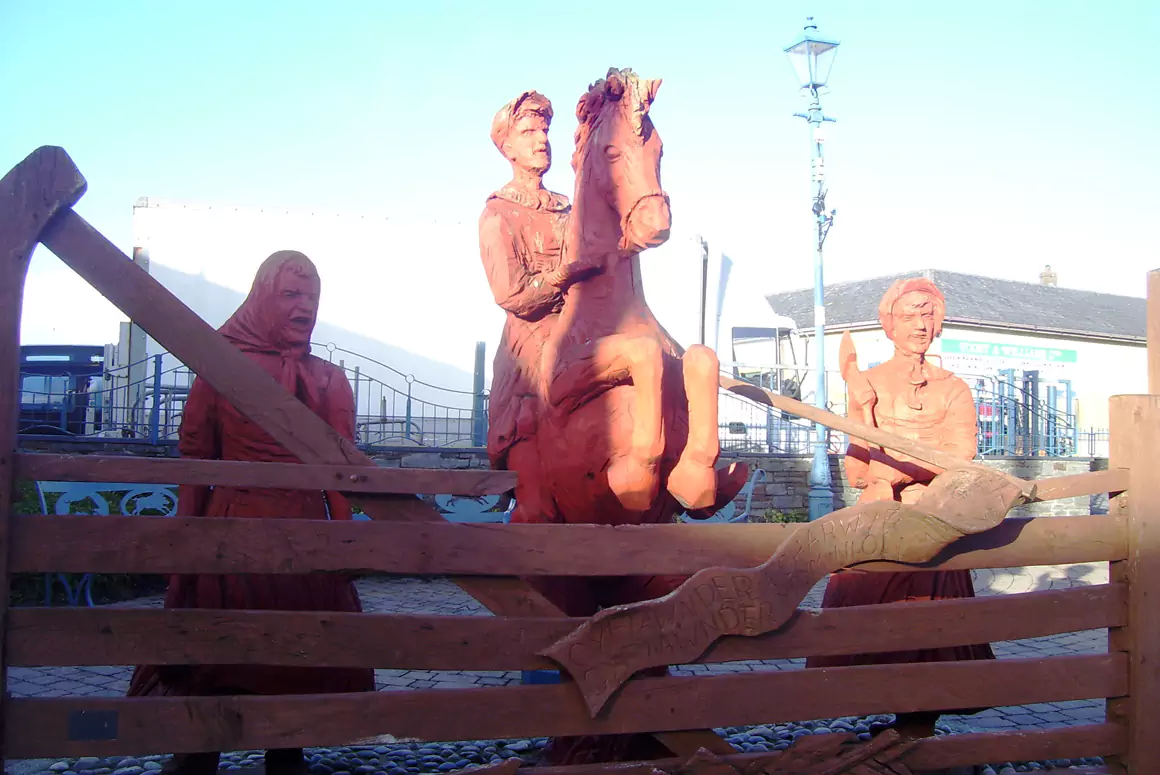
This was the very first incident in a serious insurrection that lasted for four years. In this instance the protesters triumphed, but the resentment simmered on. Within three years there was the dangerous scent of serious insurrection in the air of Wales.
Rebecca was born out of rural desperation. The starting point was perceived as a tax on rural life through the tolls that were charged for moving along the roads, although the state of the roads was especially poor. Gates run by private trusts collected the tolls to improve the standards of the roads by reinvesting income. It didn’t work. The trusts were, inevitably, profit-making and as such, bred enormous resentment. The roads did not seem to improve at all and the income the tolls generated seemed only to make rich people richer. There were 11 toll gates between Pontarddulais and Carmarthen for example, and trusts began to put additional bars across other routes to catch country people on their way to market.
There were other tensions too. Rebecca was also about the fear that a way of life was coming to an end. Cheap food imports were destroying the domestic market. Livelihoods and families were at risk as the population had already started to drift towards the towns. The toll gates were a symbol of neglect that undermined a traditional way of life.
The Rebecca Riots re-ignited with an attack on the gate at Pwll-trap and the insurrection quickly spread throughout south-west Wales. A man dressed as a woman acted as the Rebecca and his followers – The Daughters of Rebecca – pulled down gates and smashed toll houses before disappearing into the night.
Suddenly Wales was on the edge of rebellion, even though taking part in the riots was a dangerous thing to do, for to challenge authority in this way could lead to execution or transportation. But an impoverished Welsh-speaking community paying huge rents to absent English landlords felt they had no option. They went to chapel, but paid tithes, generally one tenth of their income, to support the Church of England which they did not attend, although landlords often intercepted the money anyway. The toll gates were an easily accessible symbol of all this anger and fear.
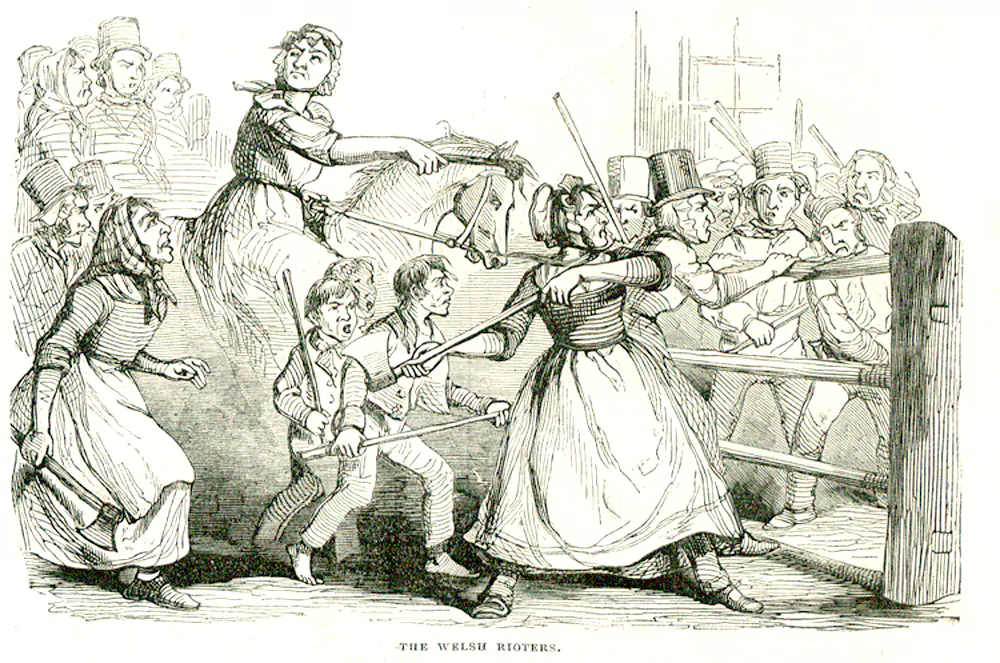
The toll keepers would only charge travellers for one journey per day, and so, people would gather at midnight to save money and give themselves a chance of returning within the same day. Angry people at midnight handing over money and resenting it, was a certain guarantee of inflammatory nights. Gates across the country were destroyed and troops were deployed to suppress the riots. There was an air of disorder and intimidation, with men forced to take part and with others turning up for the entertaining humiliation of someone who kept taking money from them. Though the mood soon changed, with the rioters less affable and increasingly violent. A gate-keeper in Cardiganshire was blinded. One in Swansea was attacked with an iron bar. But it was in Pontarddulais that the insurrection reached a tragic climax, when Rebecca and the authorities finally confronted each other in September, 1843.
The emerging violence meant that sympathy had started to ebb. Arrangements could no longer be kept secret. An informer told the authorities of a planned attack on the Hendy and Pontarddulais gates and they were waiting for them. Gunfire was exchanged, rioters shot and apprehended. Rebecca looked for revenge and so, two nights later an attack was made on the Hendy gate.
The gate keeper there was Sarah Williams, who was an experienced collector of tolls and deeply unpopular. She had been stationed there by the trust to increase revenue, since unlike some others in her profession; she never let anyone pass without paying, so this was pay-back time. Her possessions were removed from the gate house by the rioters who then set fire to her roof, and in the excitable gunfire that surrounded such an attack, Sarah was shot and killed. Was it deliberate? It was more likely to have been accidental, but there was a sense that enough was enough.
Riots and disorder were one thing, but the death of an old lady was something else. The attacks faded away.
Some rioters were transported and the disturbances died down. A Royal Commission was established and legislation was introduced. Unnecessary gates were removed, tolls were reduced, success in some eyes perhaps for a popular uprising. But the decline of the rural economy could not be prevented. They could not prevent the inevitable triumph of industrialisation that would change their world forever. Rebecca won the battle, but in the long run lost the war.
So what of our gardener, Thomas Rees from Mynachlog-Ddu, who was known as Twm Carnabwth, named after the house where he lived? He was a radical agricultural labourer who appears to have escaped unpunished after his part in the original attack in Efailwen. He later became a prize fighter until he lost an eye in a brawl. With his one eye, he finally saw the light and turned towards the path of righteousness by becoming an elder of Bethel chapel, until he was suddenly called to greater things in his garden. You can find him easily, at the back of the cemetery, on the right.
There is another interesting gravestone associated with the riots, for the shadow of Rebecca can still be found in the strangest places. It is up against the wall of the Church of the Holy Trinity in Newcastle Emlyn. It is the grave of John Kearns, a member of the Light Dragoons who was based in Carmarthen. During the disturbances in June 1843 he was drowned whilst swimming, off duty, in the river. You should see it before it disappears forever, for there is such a danger that we might lose it. The inscription on his fading gravestone tells us:
He fell not in the battle strife, nor on the sultry plain.
Death did not meet the warrior there, nor on the storm main.
But there, in Tivy’s winding stream, one sunny summer’s day,
Where bathing peacefully he sank, his spirit passed away.
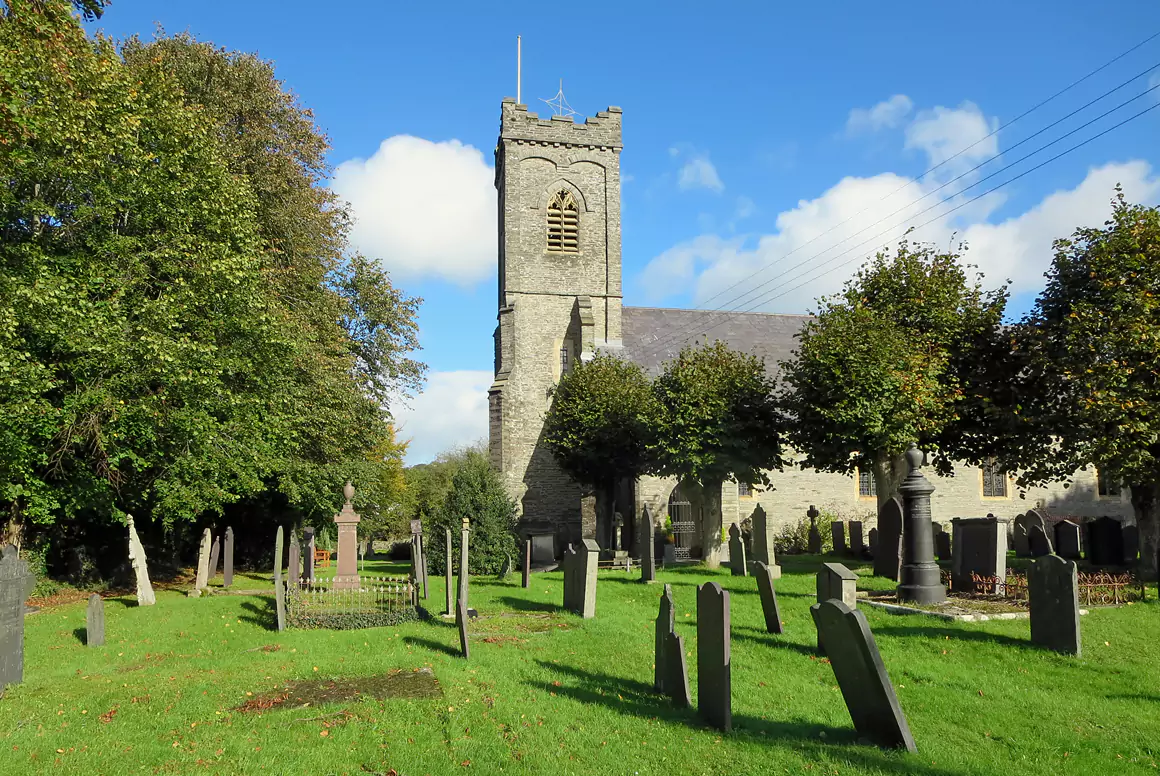
And so, where did the idea of Rebecca come from? There are a number of explanations. It could have been taken from a quotation in Genesis, “And they blessed Rebecca and said unto her, let thy seed possess the gates of those which hate them.” A church-going population would have seen the reference instantly. Alternatively, it represented a symbolic inversion of the natural order of things, with women taking action, not men, and with men wearing women’s clothes, a symbol of their own world which had gone mad. Or perhaps it was simply that the very first, Twm Carnabwth, disguised himself by borrowing a dress from a neighbour from Llangolman who was called “Rebecca Fawr” (Big Rebecca.) Like you, that is the explanation that I prefer.


